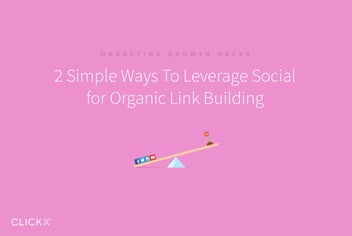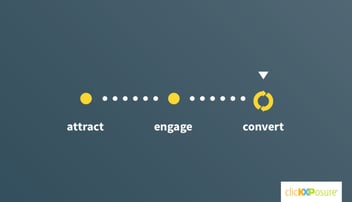The Best Kept Secret for Higher Call to Action Conversions
Hitting conversion goals with your Calls to Action (CTAs) often feels like an enigma when you haven’t broken the process down to its simplest elements.
You know what you want—for visitors to your website to transform from passive bystanders into engaged customers (or potential customers). This is usually represented by an email signup or an initial purchase. Thankfully, the ‘secret’ to better conversions—i.e. achieving the above—is straightforward: Ask for them!
In this post, you will learn to take advantage of this simple approach. With the above ‘secret’ in mind, we will explore the three key factors that will ultimately define the success of your CTA:
- where you place it,
- what tangible benefit you offer your visitors, and
- how you word your copy.
Let’s get cracking!
Where to Position Your CTA for Maximum Benefit
The first step to asking for conversions is knowing when and where to ask for them.
[Tweet “The first step to asking for conversions is knowing when and where to ask for them.”]
There’s no single ‘correct’ place to put a CTA—which can consist of buttons, links, images, or text—as you’ll incorporate it strategically, depending on your goals.
Here’s a few ways to approach CTA placement based on its importance relative to your overall website goals.
The Header
The primary goal for most small businesses is to get customers through the door—virtual or otherwise. That may be defined by a call, an email, or a visit. A CTA that encourages this primary goal is appropriate to place anywhere throughout your site, but the header is a particularly effective spot.
For example, let’s look at Texas Painting Company. Their primary goal is to have the viewer request a quote, so they’ve made it available as a link in their main header navigation. The link is prominent, and the language is clear and direct:

The Footer
The footer is a good place to provide a secondary CTA—either a reminder of your primary CTA, or an additional one that seeks to achieve a secondary goal.
For example, H&S Roofing is building their social media presence, so they’ve included ‘Join Us on Facebook’ CTA in their footer:

The Sidebar(s)
Like the footer, the sidebar offers another good opportunity to prompt or remind visitors with primary or secondary CTAs. It tends to be a little more prominent than the footer, but not as effective as the header.
Powers Plumbing wants you to spread awareness about their extended services, so they’ve included a call to visit their ‘Service & Repair’ or ‘Remodel’ pages in their sidebar:

The Page Content
CTAs embedded within the content of a page are often hugely effective, as people can be somewhat ‘blind’ to items in the header, sidebar and footer.
For example, to show off their portfolio, Home Rebuilders has a page that highlights their version of a demo reel, tempting the viewer to ‘Visit Our Gallery’.

How to Offer Immediate Gratification to Compel Action
Once you’ve picked the right spot(s) for your CTA, it’s time to hook your viewer with something juicy. The simplest way to is to offer them something tangible as soon as they act.
There are many ways to do this, but below we’ve explored a couple of the most popular methods for you to choose from.
1. Offer a Free eBook
Let’s say you run a painting company. Chances are good that your blog reader may want to learn more about how paint relates to their home remodeling decisions. With that in mind, you could offer a free eBook in exchange for subscribing—in this case, Choosing the Right Interior Paint for Your Home might do the trick.
Once visitors have subscribed, they’ll automatically receive the download link. Now, you have a new subscriber interested in learning more from you in the future, and they’ve learned a bit more about how to choose interior paint for their home.
Not sure where to start? Here’s a great guide to creating an eBook for starters. In terms of the technical side of things, email marketing software providers such as MailChimp and AWeber offer all the functionality and the guidance you need.
2. Offer a PDF Checklist
Now let’s say you own a roofing company. In this scenario, your blog reader may benefit by running a few tests to see if their roof is leaky. It will save them loss of value in their home down the line if they catch it early.
With that in mind, you could offer a PDF checklist they can print out and use monthly to ensure that their roof is in tip-top shape—perhaps Your Monthly Roof Health Checklist.
Create your PDF, then follow the same steps as provided for the eBook to send it to new subscribers!
After offering your visitors an immediate and tangible benefit, it’s time to move on to the final step to seal the deal.
How to Word Your Copy Effectively
While offering immediate gratification may convince someone to take action, to substantially increase conversions you need to clearly communicate the long term benefits they’ll reap once they’ve converted. Make it a no-brainer by demonstrating an overwhelming benefit to effort ratio.
Step 1: Clarify What You Are Asking For
Do you want the visitor to a call, email, click-through, or subscription? It must be absolutely clear to the visitor through your copy.
For example, instead of, “Subscribe Now for your free Choosing the Right Interior Paint eBook!”, you could more clearly state, “Enter your email and click Subscribe for your free eBook!”
Step 2: Clarify Why It Will Benefit the Visitor in the Long-Run
Will they save money? Will they solve a long-standing problem? Will they be more comfortable? Will they have more time?
You’ve already made your call to action and explained them how simple it is to complete. Let’s take it one step further and give them a compelling reason to subscribe that will continue to reap benefits for them in the long-term:
Subscribe Now for your free “Choosing the Right Interior Paint” eBook! Simply enter your email and click Subscribe to learn how to avoid investing hours of time and thousands of dollars on the wrong paint job.
Note that taking the time to review how their effort is minimal compared to what they will get in return is particularly effective for your landing pages, which is essentially one long CTA.
Conclusion
The secret to high conversions is asking your readers to convert with well-placed CTAs that clearly communicate both immediate gratification and long-term benefits. If you don’t ask for conversions with effective calls to action, you’re not likely to hit your conversion goals, and as a result, your online marketing efforts will be wasted.
When you take the time to know when and where to employ CTAs, offer immediate gratification for action, and address the long-term benefits for your viewers, your conversions will begin improving.
Once you’ve implemented the above tactics, start testing for which combinations work best for your audience, and tell us what you’ve tried that works (and what doesn’t) in the comments section below!




